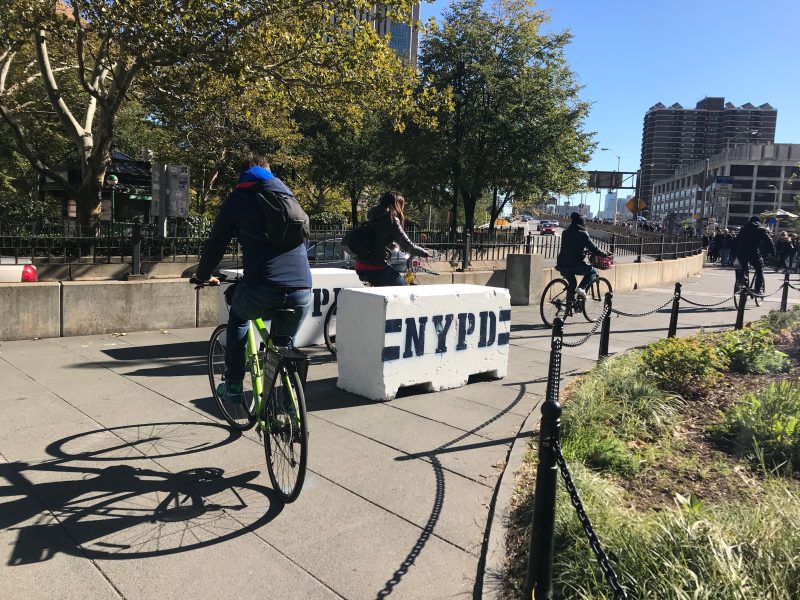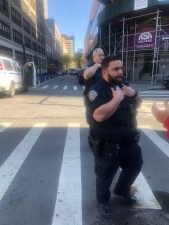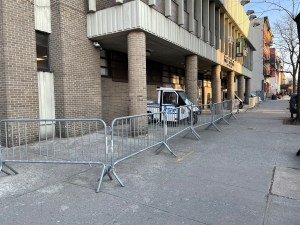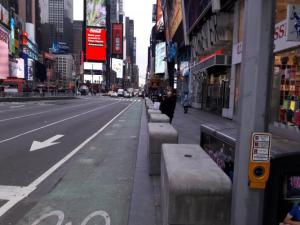Braking News: NYPD Barricades Make Brooklyn Bridge Bike Path Even Worse!

These sugar cubes are no cure for the headaches on the Brooklyn Bridge bikepath.
The NYPD has just made the already-crowded foot and cycling route on the fabled span even more difficult to access, throwing down three massive concrete barricades on the Manhattan end on Tuesday.
The agency said it was acting based on “risk assessment,” though it did not cite a specific threat at a press conference on Tuesday. Officials did refer to past violent acts, include Saturday’s shooting at a Pittsburgh synagogue and the spate of mail bombs that we sent to liberal targets around the country.
“Fortunately or unfortunately, it’s a complex process … when we do risk assessment and we identify locations,” said counterterrorism chief Joe Belluchi. “We try to find a balance between safety and security and the fee flow of pedestrian traffic. … It is an ongoing program and we feel it’s very very important to us.”
The big white blocks — called “sugar cubes” by transit nerds — are meant to deter the rising threat of car or truck terrorism. They were installed one day short of the one-year anniversary of a terror attack on the West Side Greenway that killed eight and injured 11.
Cyclists and pedestrians already have a huge problem with the bridge’s walkway, which is dangerously congested with tourists, pedestrian commuters and cyclists — all sharing a space that is 10 feet wide at its narrowest.

The barricades inhibit cyclists, who now have to squeeze though a space that is narrower than national standards set by transportation officials — just as they do along the greenway, where bollards are sometimes little more than four feet apart. The West Side Greenway is the busiest bike path in North America.
Police Commissioner James O’Neill suggested that the Brooklyn Bridge bollards were deployed as part of a larger security effort for Halloween — but hinted that more is to come.
“If there is any gap in any of the pedestrian crossings that we see, they’re immediately filled,” he said.
The Commish isn’t joking. As transportation reporter Aaron Gordon reported for Gothamist, the city is in the midst of a bollard-buying spree, spending $150 million on them — far more per bollard than other cities.
The Department of Transportation declined to comment for this story, deferring to the NYPD, which is not a transportation agency. The DOT has also declined to offer a timeline for widening the Brooklyn Bridge footpath.
Update: An earlier version of this story referred to the massive concrete blocks as bollards, but a bollard strictly means a barrier that is vertical in nature. These are not that.




